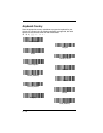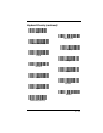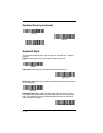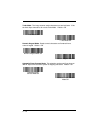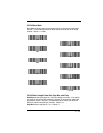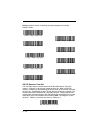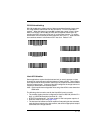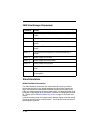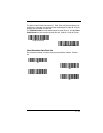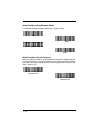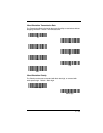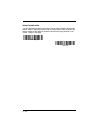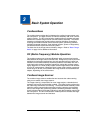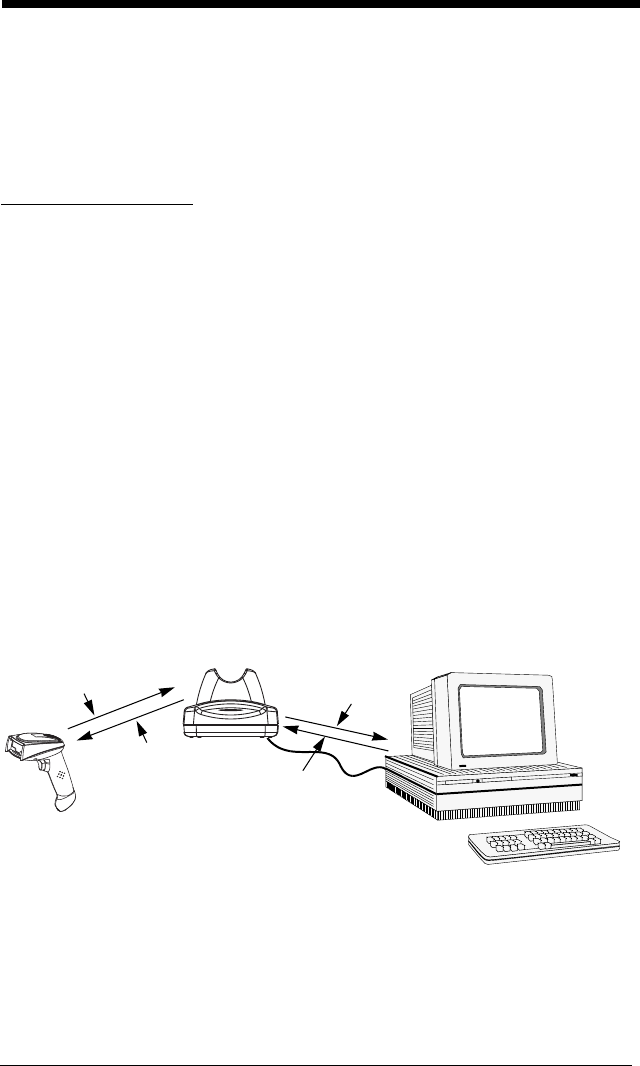
2 - 18
Escape commands are addressed to the image scanner via “Application Work
Groups.” Once a command is sent, all image scanners in a group respond to
that command. Because of this situation, it is recommended that each image
scanner is assigned to its own group in Host ACK mode.
The commands to which the image scanner responds are listed on page 2-20.
The <ESC> is a 1B in hex. A typical command string is y <ESC> x, where “y” is
the application work group number, “<ESC> x” is the escape command, and the
comma is the terminator
, which is required.
Commands may be strung together to create custom response sequences. An
example of a command string is listed below.
0<ESC>4<ESC>5<ESC>6,
The above example will make an image scanner in application work group zero
beep low, then medium, then high.
Once Host ACK is enabled, the system works as follows:
• The image scanner reads a code and sends data to the base/host system.
No audible or visual indication is emitted until the image scanner receives an
escape command. The image scanner read illumination goes out when
there’s a successful read.
• Image scanner operation is suspended until 1) a valid escape string is
received from the host system (via the base) or 2) the image scanner times
out.
• Once condition 1 or 2 above has been met, the image scanner is ready to
scan again, and the process repeats.
A time-out occurs if the imager does not receive a valid escape command within
10 seconds. A time-out is indicated by a triple beep. If a time-out occurs, the
operator should check the host system to understand why a response to the
imager was not received.
1
)
Go
o
d
R
e
a
d
3
)
A
C
K
:
H
o
s
t
t
o
B
a
s
e
4
)
A
C
K
:
B
a
s
e
t
o
I
m
a
g
e
S
c
a
n
n
e
r
2
)
B
a
s
e
s
e
n
d
s
d
a
t
a
t
o
h
o
s
t



